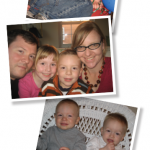ACR CONVERGENCE 2021—Many of the effects of childhood-onset systemic lupus erythematosus (cSLE) and vasculitis carry into adulthood and present adult rheumatologists with key differences in managing these patients after their transition from a pediatric to an adult provider.
“The young adult with childhood-onset lupus is similar in many ways to adults with lupus, but there are important differences, and it is important to be aware of those,” said Stacy Ardoin, MD, professor of pediatric and adult rheumatology at Nationwide Children’s Hospital, Ohio State University, Columbus. During ACR Convergence 2021, she opened a session titled Not Just Little Adults: What Rheumatologists Should Know About Childhood-Onset SLE & Vasculitis by discussing these differences and management issues in patients with cSLE.
Paul Brogan, MD, professor of vasculitis and section head for infection, inflammation and rheumatology, University College London, Institute of Child Health at Great Ormond Street Hospital, spoke about the differences in vasculitis in children and adults. He dispelled myths for adult rheumatologists and provided evidence to support the treatment of children with vasculitis transitioning into adulthood.
cSLE
The pathogenic mechanism and patterns of disease involvement in childhood-onset SLE and adults are the same, as is the treatment approach. But important differences exist in childhood-onset disease, which is marked by more organs affected, more severe disease (i.e., higher disease activity), faster damage accrual, higher mortality, higher risk of complications due to more severe disease and different pharmacokinetics.
cSLE also has a greater genetic component, with these children at greater risk of developing the rarer, monogenic form of disease. Dr. Ardoin explained when adult rheumatologists should suspect a monogenic form of SLE and how to pursue an evaluation to make the diagnosis. Clues, she said, include onset in a child 6 years or younger with a history of immunodeficiency, family history of immunodeficiency, as well as involvement of the skin, kidneys and central nervous system.

Dr. Ardoin
Walking attendees through treatment strategies for cSLE, Dr. Ardoin emphasized that treatment is similar to the treatment of adults in that it’s tailored to organ involvement—or to mild to severe disease activity. However, for children, the dosage of the same drugs given to adults needs to be based on weight and body surface to avoid either underdosing or overdosing these patients.
“I’ve often found rheumatologists are concerned about giving doses that may approximate adult disease and tend to use a dose lower than is needed by the child,” she said, adding that this can result in undertreating their disease.


